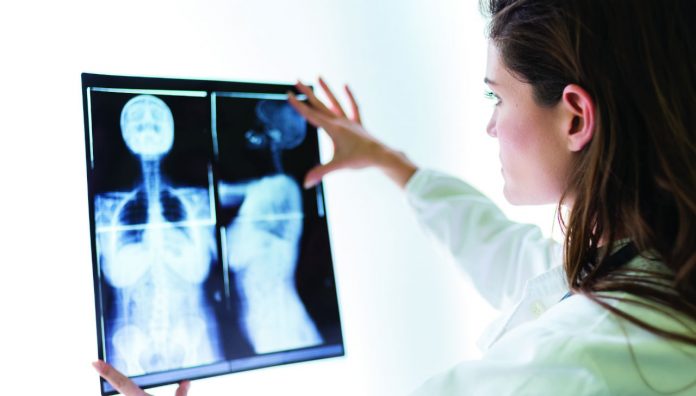The purpose of this evidence summary is to present the best available evidence regarding the efficacy and safety of breast cancer prevention medications (CPM).
Background
Breast cancer is a major public health challenge and one of the highest causes of mortality in women.2 Many secondary prevention programs are focused on early detection strategies using screening mammograms.3 Primary prevention of breast cancer relies on preventing the occurrence of cancer incidences by identifying risk factors associated with breast cancer.4 The National Institute for health and care Excellence (NICE 2017) in the United Kingdom has developed a tool to calculate individuals’ risk of developing breast cancer. The tool is based on various risk factors such as age, race, age at the first menstrual cycle, age of first live birth of a child, and numbers of first degrees relatives with breast cancer.5
Women with high risk of developing breast cancer could benefit from risk reducing cancer prevention medications (CPM), chemoprevention or preventative therapy.6 Many of the compounds that are currently being used for the treatment of breast cancer have been used in clinical trials and were found to be effective in prevention of breast cancer.7 Other agents such as Vitamin D, aspirin, metformin, statins (pravastatin, simvastatin), bisphosphonate (zoledronate, alendronate) have also been trialed.1 Therefore, the aim of this evidence review is to summarise the efficacy and safety of risk-reducing medications for breast cancer in high-risk women. These medications include selective estrogen receptor modulators (SERMs) and aromatase inhibitors.
Characteristics of the studies
Randomised controlled trials examining the benefit of any CPM in women who are at high risk of breast cancer were included. There were no language limitations. Quasi-RCTs were excluded due to their method of allocation being dependent on date of birth. Women with no history of breast cancer but who are at high risk of developing breast cancer were included in the study. Studies that included CPM such as S‑elective estrogen receptor modulators (SERMs): tamoxifen, raloxifene, lasofoxifene; Aromatase inhibitors: anastrozole, letrozole, exemestane and Vitamin D, aspirin, metformin, statins (pravastatin, simvastatin), bisphosphonate (zoledronate, alendronate) were included.
Quality of the studies
A total of six studies were included in the review and five in the meta-analysis. Studies included in the report had mostly low risk of bias and only two studies had unclear risk of bias. The main sources of bias were performance bias and attrition bias due to unclear reason of loss to follow up.
Results
- The review included a total of six studies with 50,927 women who were randomised to receive one CPM or placebo. Three of the six studies examined tamoxifen and placebo; two studies compared Aromatase inhibitors (exemestane or anastrozole) versus placebo and one study compared tamoxifen versus raloxifene. was a higher incidence of endometrial carcinoma (RR 2.26, 95% CI 1.52 to 3.38) and thromboembolism (RR 2.10, 95% CI 1.14 to 3.89) compared to women who received placebo.
- For the three studies comparing tamoxifen versus placebo, there was a decrease risk of developing breast cancer compared to placebo (risk ratio (RR) 0.68, 95% confidence interval (CI) 0.62 to 0.76). Regarding adverse events, tamoxifen was likely to increase the risk of adverse events compared to placebo (RR 1.28, 95% CI 1.12 to 1.47). There
- There were two studies examining the benefit of Aromatase inhibitors versus placebo. Aromatase inhibitors reduced the risk of breast cancer by 53% (RR 0.47, 95% CI 0.35 to 0.63). The adverse events have also increased by 18% (RR 1.18, 95% CI 1.09 to 1.28). Examples of adverse events include hot flashes, diarrhoea and arthralgia. There was no difference in risk of endometrial cancer or thromboembolism between Aromatase inhibitors and placebo.
- For the study comparing tamoxifen and raloxifene, raloxifene showed a lower reduction of risk of breast cancer than tamoxifen (RR 1.25, 95% CI 1.09 to 1.43), however, it was associated with less adverse events especially endometrial cancer and thromboembolism.
Conclusion
This review showed that CPM, particularly aromatase inhibitors, are associated with reduction of breast cancer risk, however the adverse events profile varied significantly between the various medications.
Implication for practice and research
The current evidence supports the use of cancer prevention medications for high-risk women of developing breast cancer. However, less is known about long-term toxicity profile and the optimum duration of taking these medications. Further research is required to identify the best CPM to be used with the highest efficacy and lowest toxicity.
References
- Mocellin S, Goodwin A, Pasquali S. Risk-reducing medications for primary breast cancer: a network meta-analysis. Cochrane Database of Systematic Reviews 2019, Issue 4. Art. No.: CD012191. DOI: 10.1002/14651858.CD012191.pub2. At: https://www.cochranelibrary.com/cdsr/doi/10.1002/14651858.CD012191.pub2/epdf/abstract
- Torre LA, Bray F, Siegel RL, Ferlay J, Lortet-Tieulent J, Jemal A. Global cancer statistics, 2012. CA: A Cancer Journal for Clinicians 2015;65(2):87–108. At: https://www.ncbi.nlm.nih.gov/pubmed/25651787
- Fuller MS, Lee CI, Elmore JG. Breast cancer screening: an evidence-based update. Medical Clinics of North America 2015;99(3):451–68. At: https://www.ncbi.nlm.nih.gov/pubmed/25841594
- Gail MH. Twenty-five years of breast cancer risk models and their applications. Journal of the National Cancer Institute 2015;107(5):pii: djv042. At: https://www.cochranelibrary.com/cdsr/doi/10.1002/14651858.CD012191/epdf/full
- National Institute for health Care Excellence (NICE). Breast cancer risk category. nice.org.uk/guidance/cg164/chapter/recommendations#breast-cancer-risk-category2017.
- Nichols HB, DeRoo LA, Scharf DR, Sandler DP. Risk-benefit profiles of women using tamoxifen for chemoprevention. Journal of the National Cancer Institute 2014;107(1):354. At: https://www.ncbi.nlm.nih.gov/pubmed/25475563
- Olin JL, St Pierre M. Aromatase inhibitors in breast cancer prevention. Annals of Pharmacotherapy 2014;48(12): 1605–10. At: https://www.ncbi.nlm.nih.gov/pubmed/25159003
For the full review, please refer to: Mocellin S, Goodwin A, Pasquali S. Risk-reducing medications for primary breast cancer: a network meta-analysis. Cochrane Database of Systematic Reviews 2019, Issue 4. Art. No.: CD012191. DOI: 10.1002/14651858. CD012191.pub2.1



 Professor Margie Danchin[/caption]
Professor Margie Danchin[/caption]

 Dr Peter Tenni[/caption]
Dr Peter Tenni[/caption]
 How should we deprescribe gabapentinoids, according to the Maudsley Deprescribing Guidelines[/caption]
How should we deprescribe gabapentinoids, according to the Maudsley Deprescribing Guidelines[/caption]



 Pharmacists have always prescribed, but they have the potential to prescribe much more
Pharmacists have always prescribed, but they have the potential to prescribe much more






